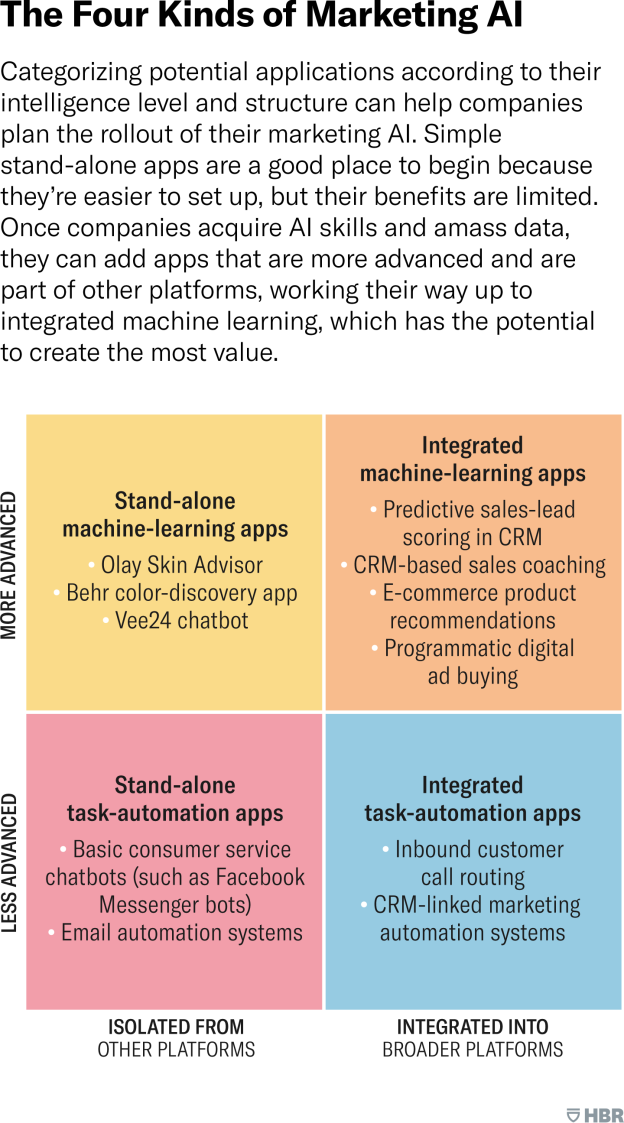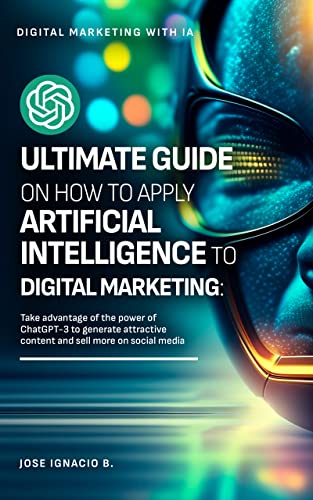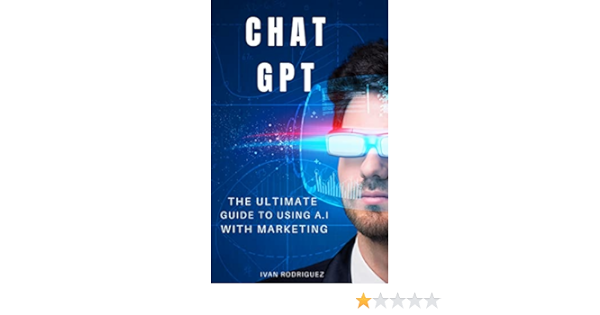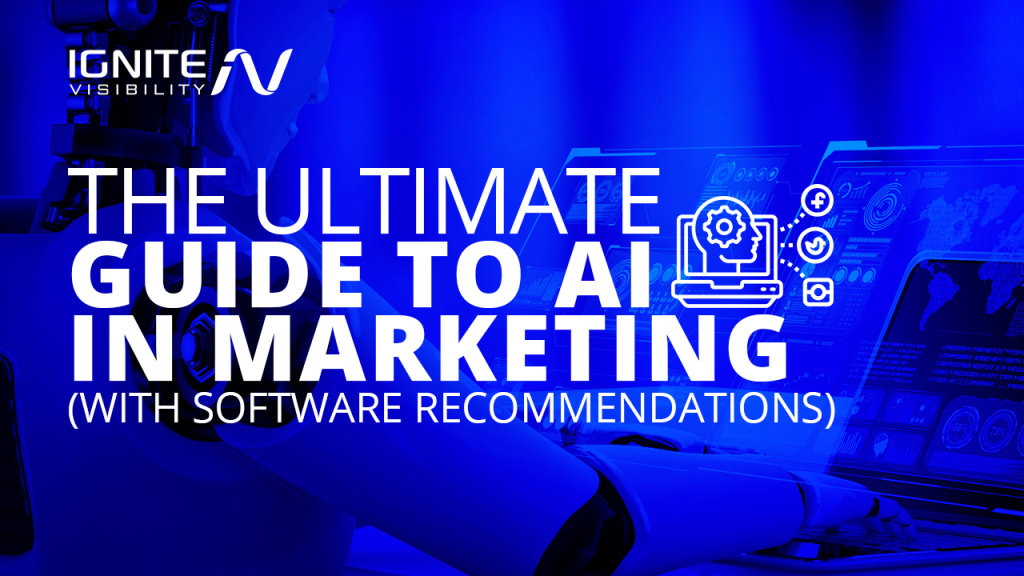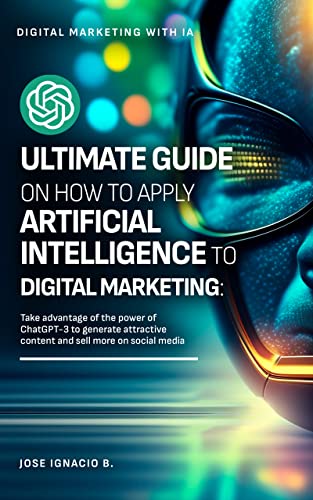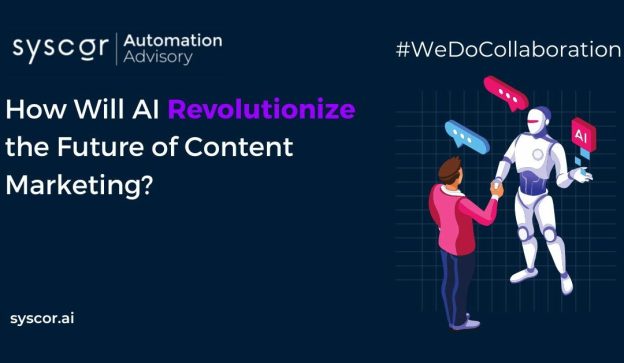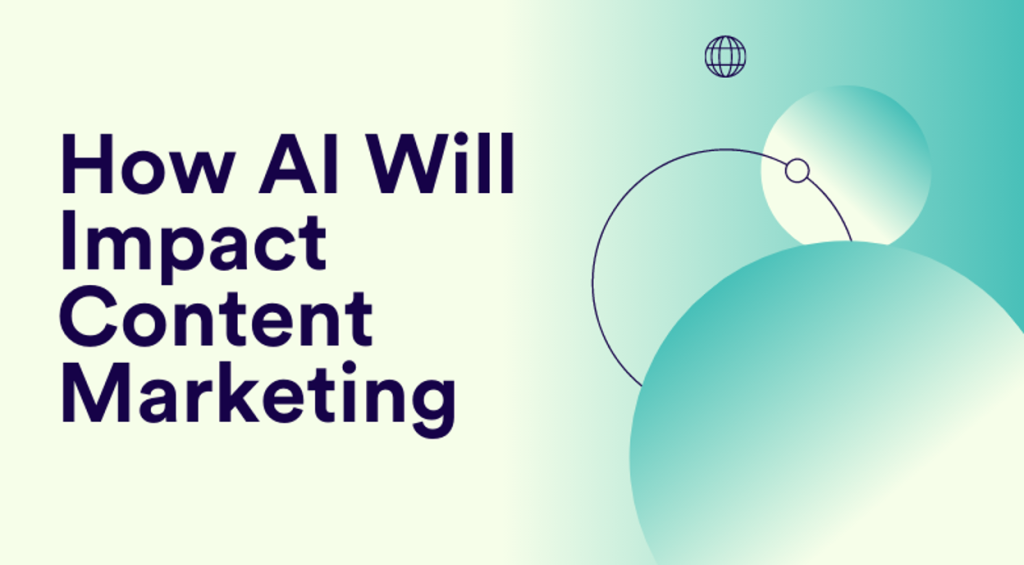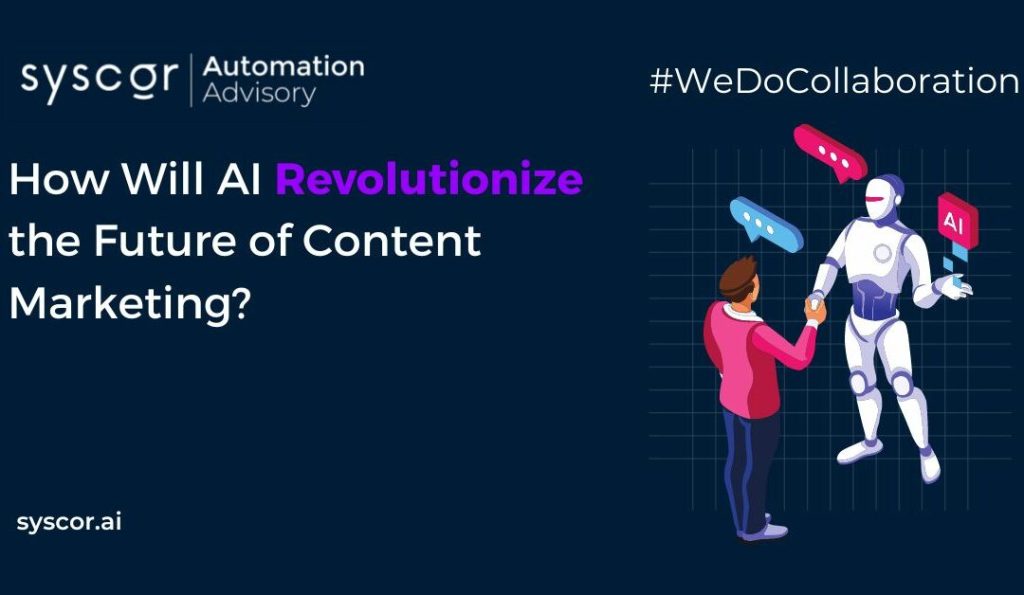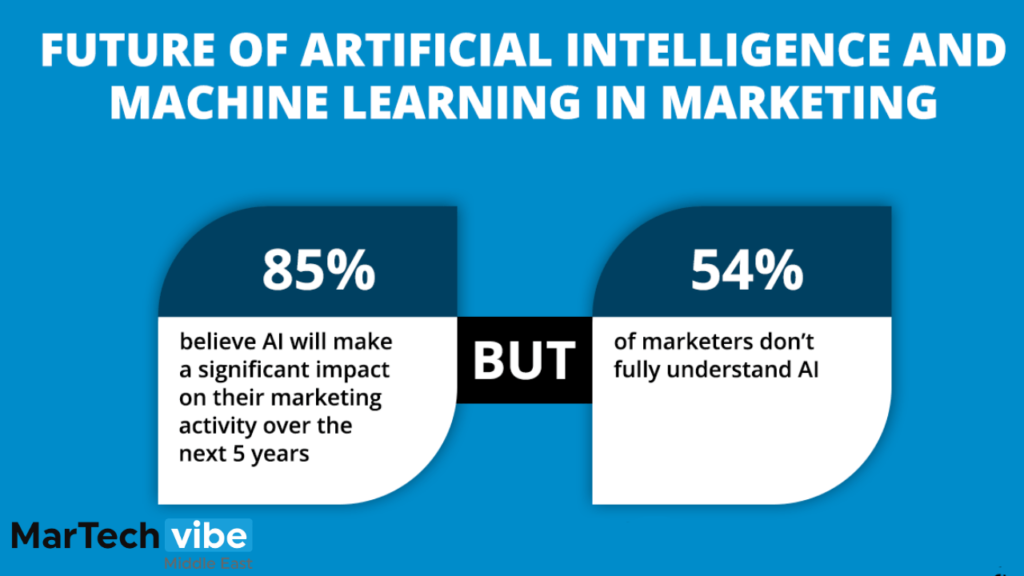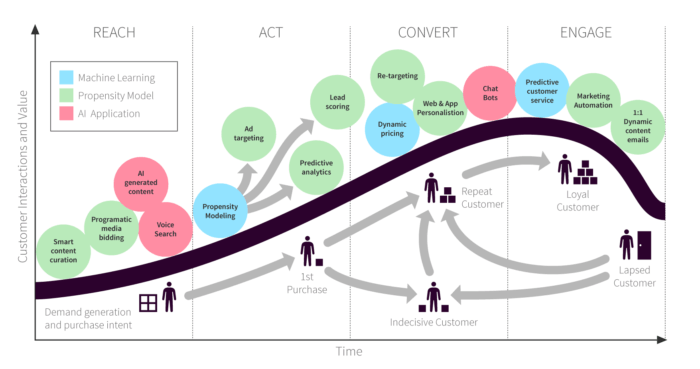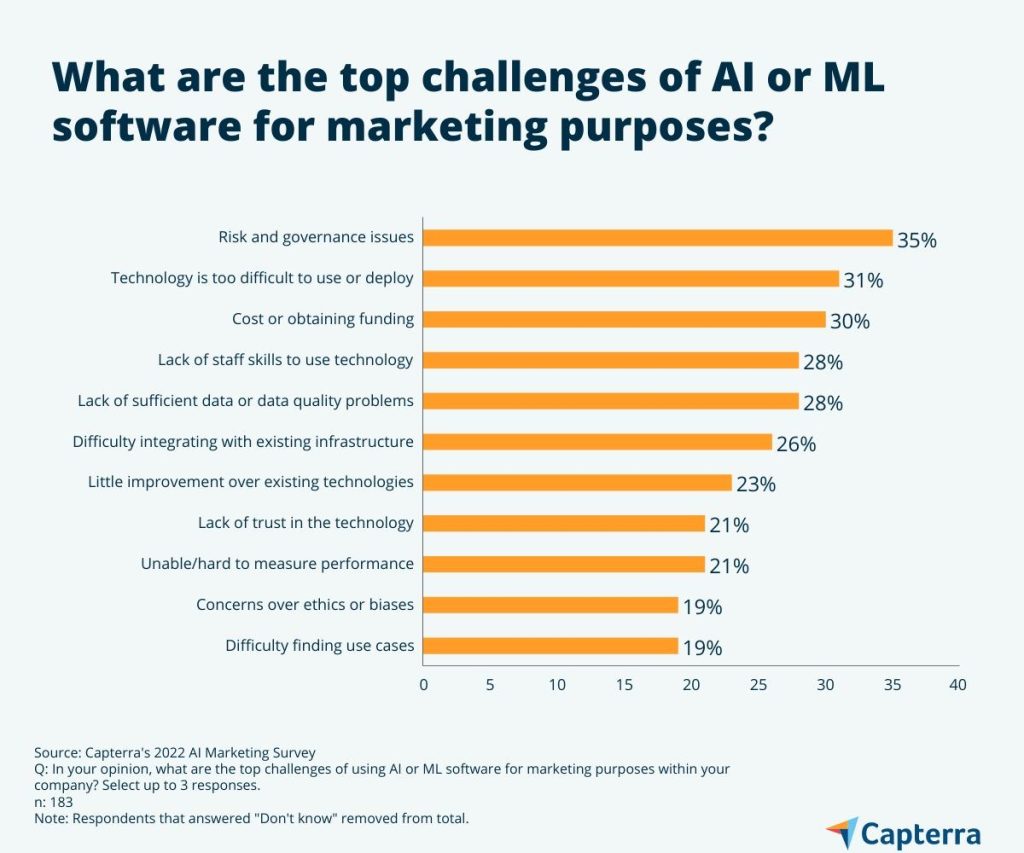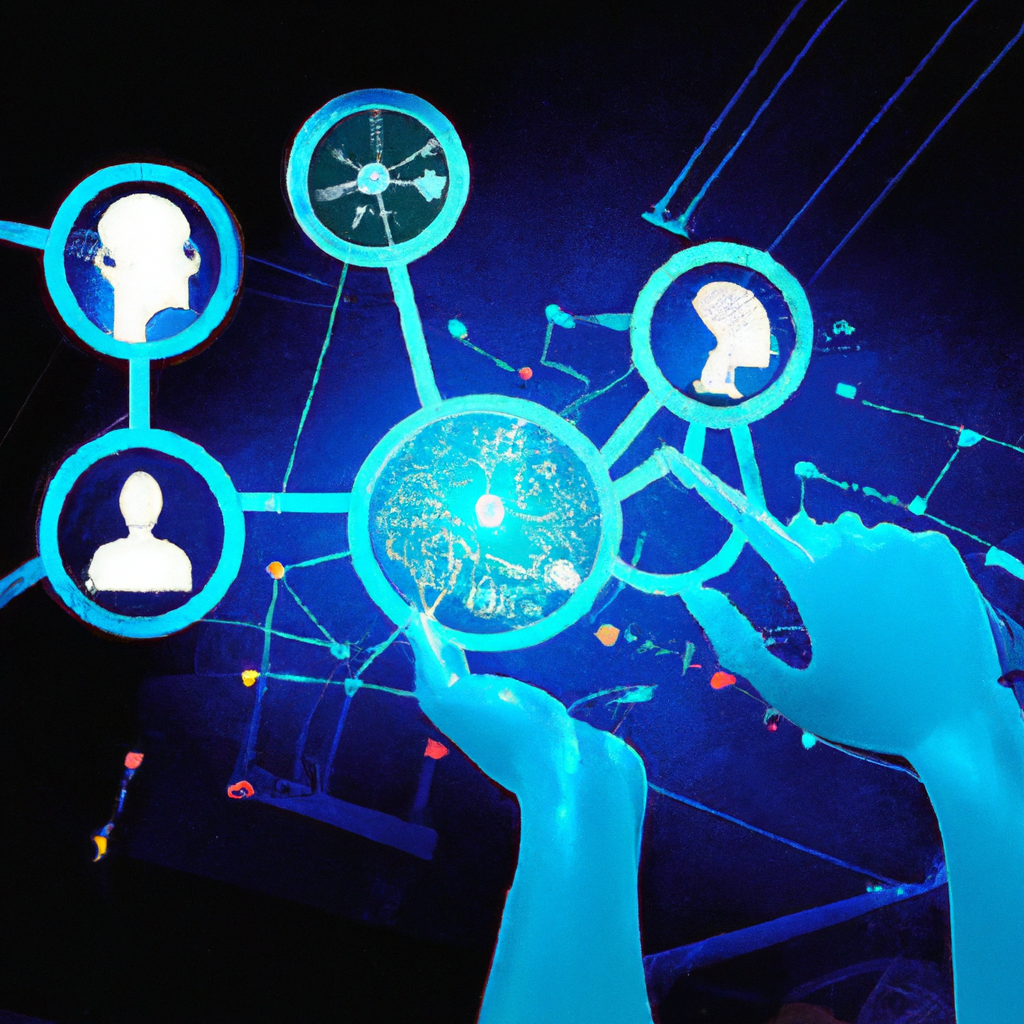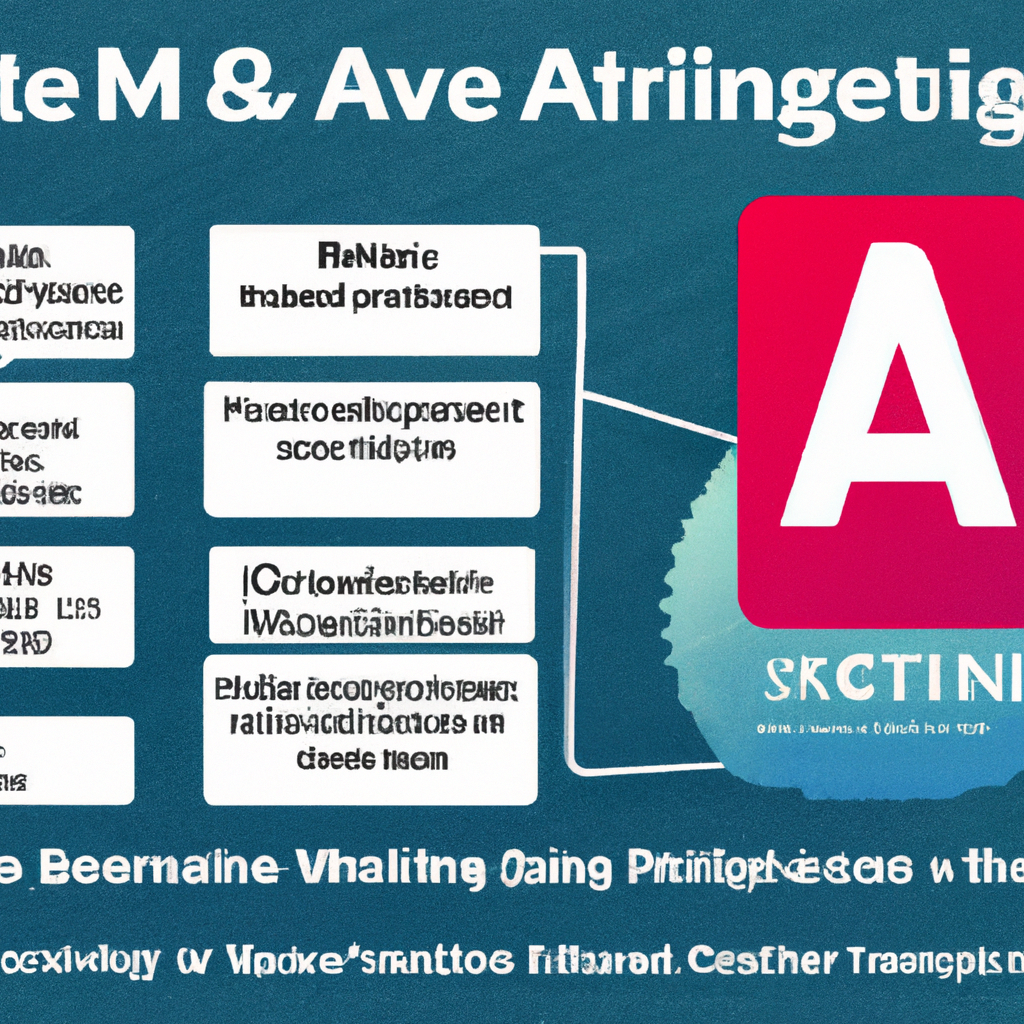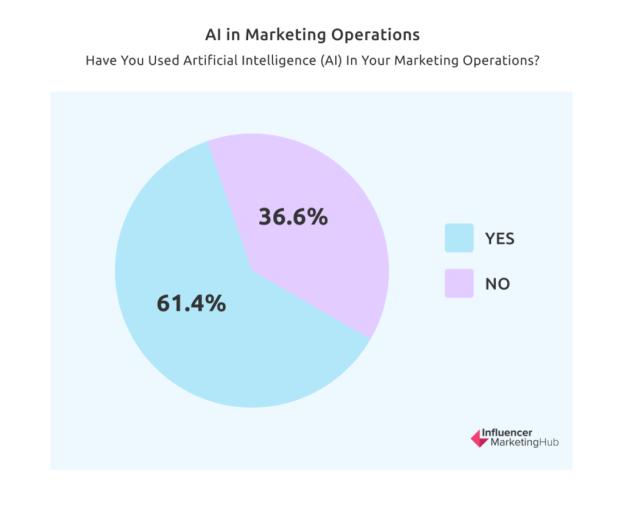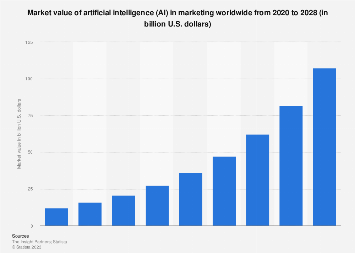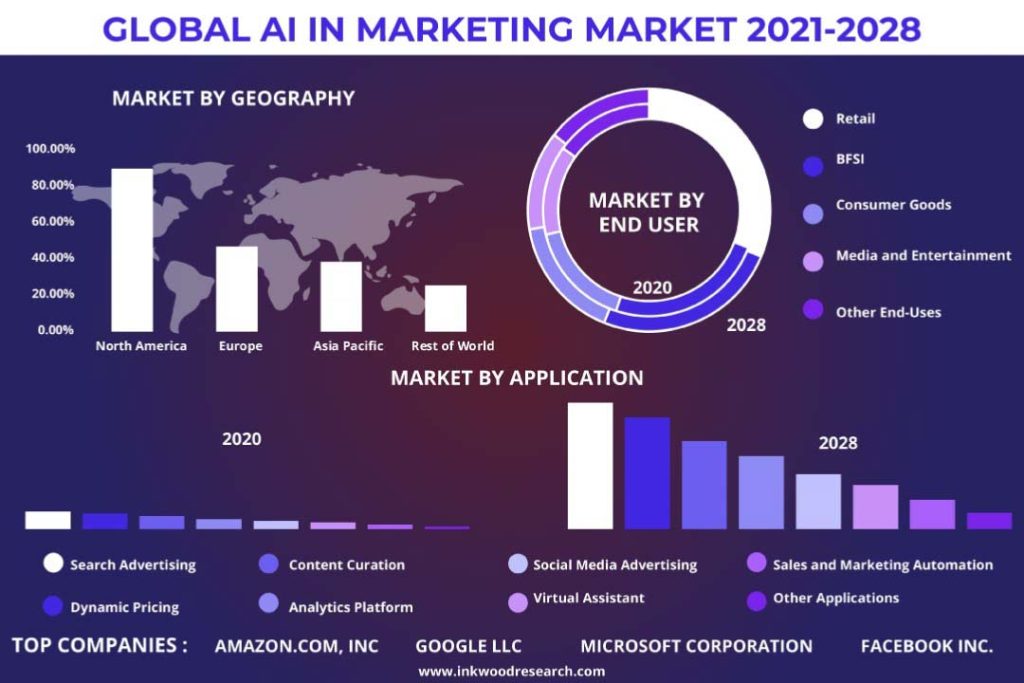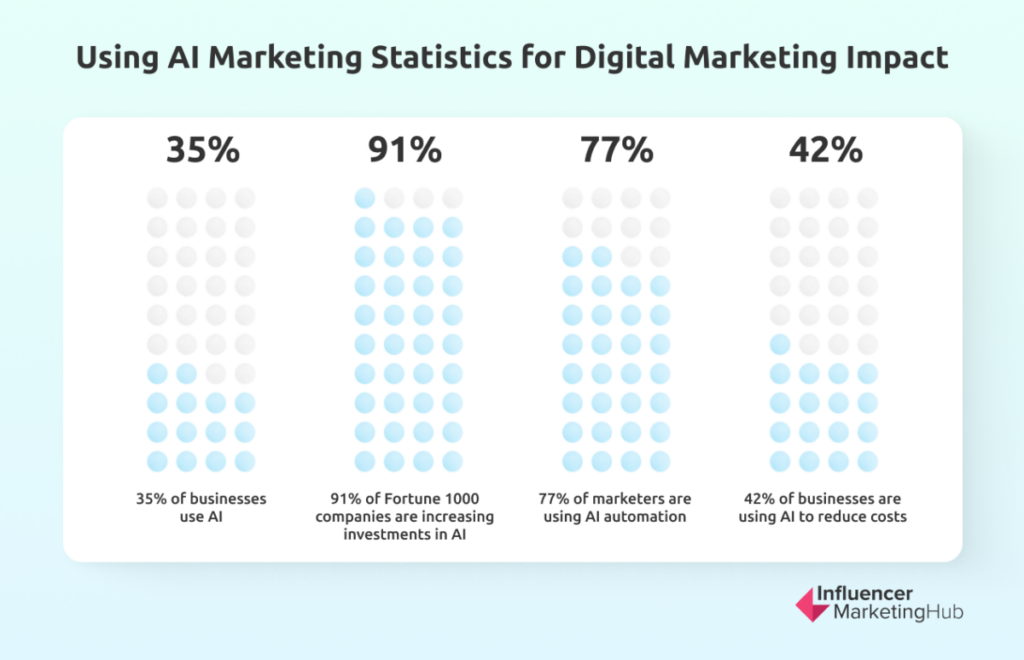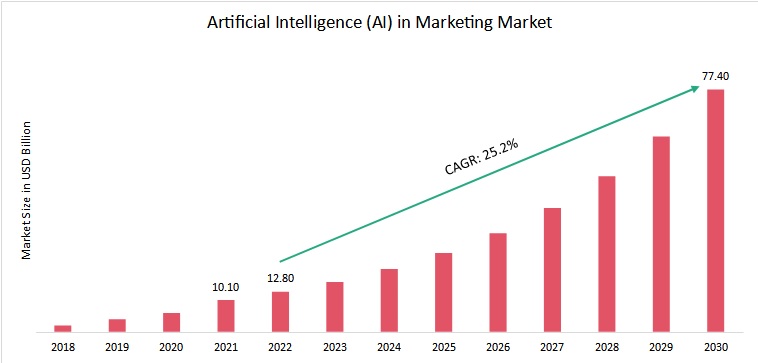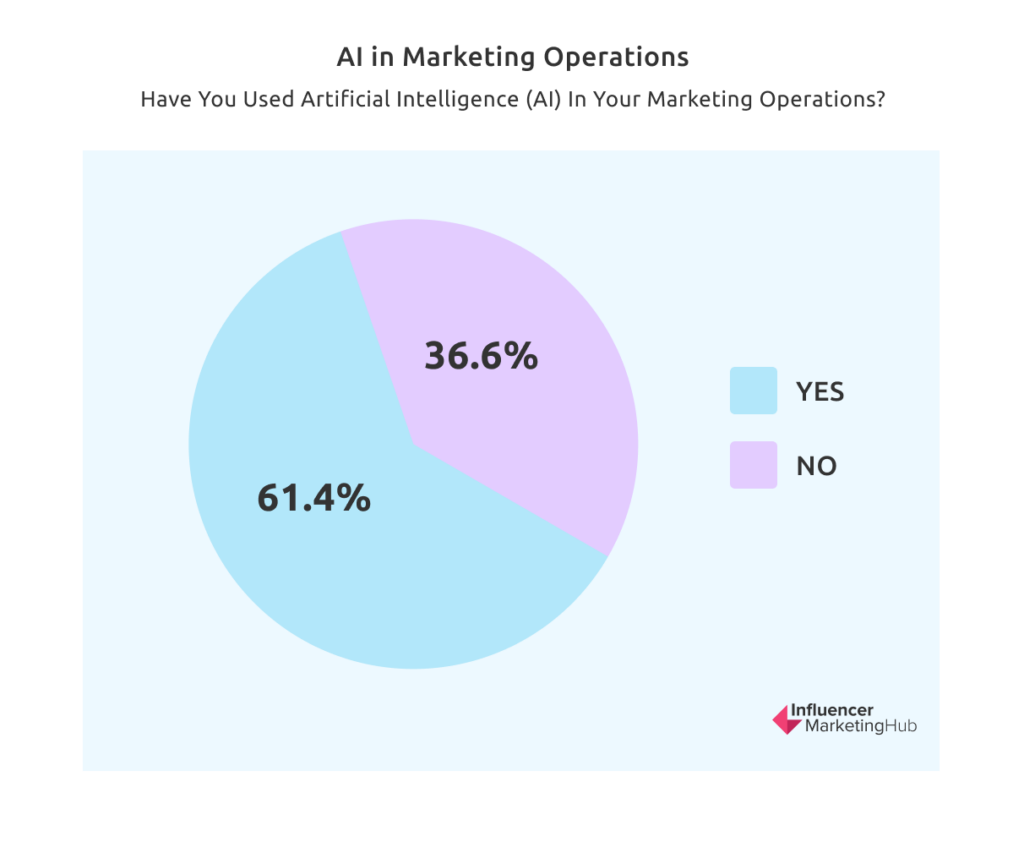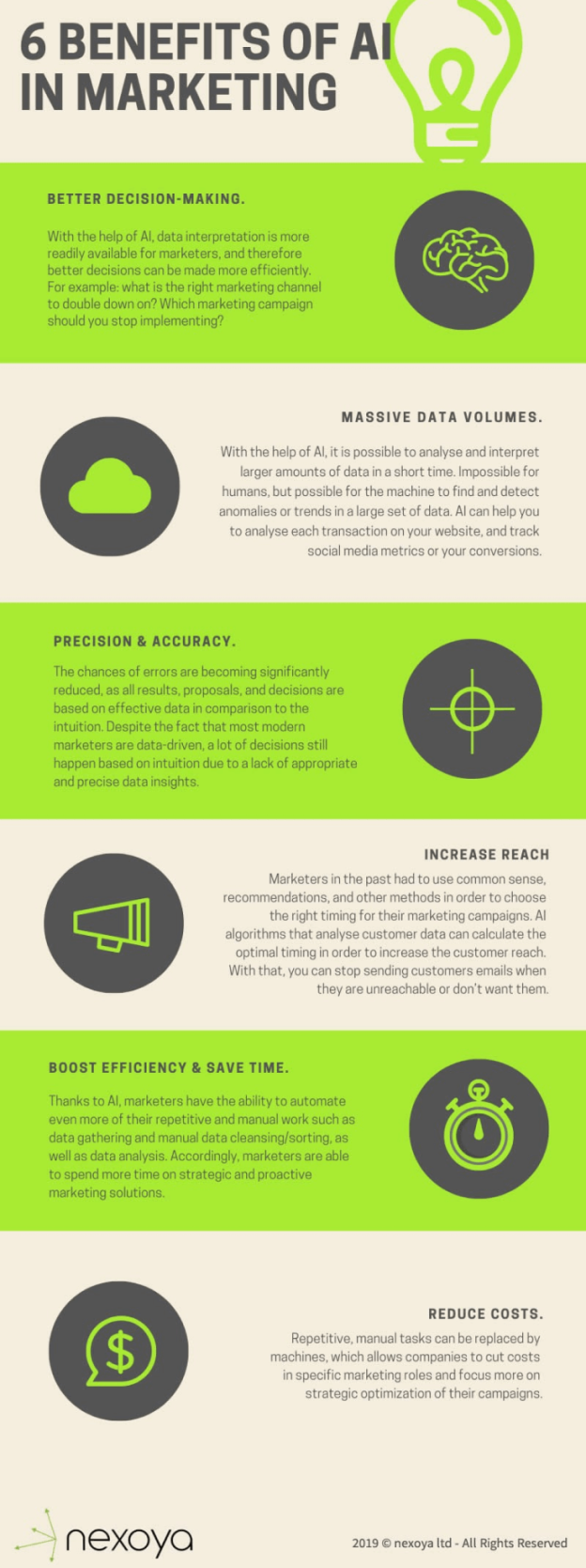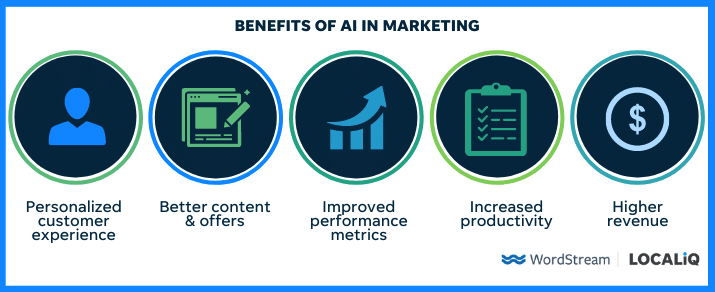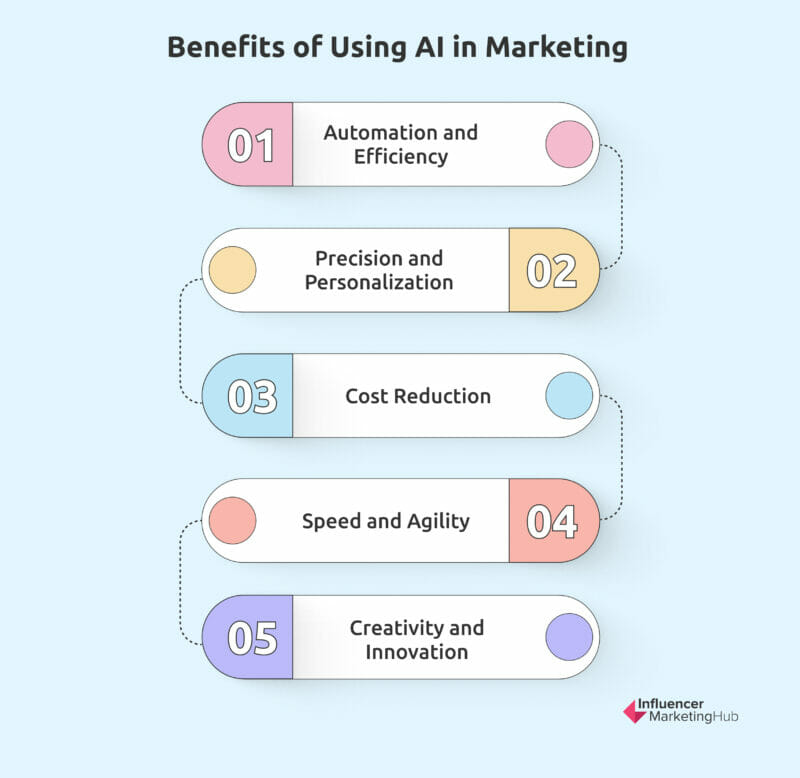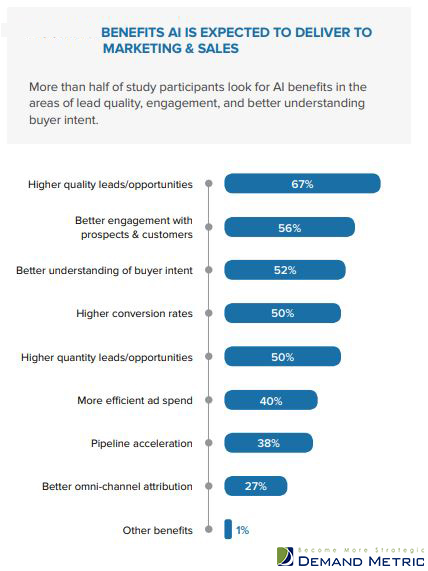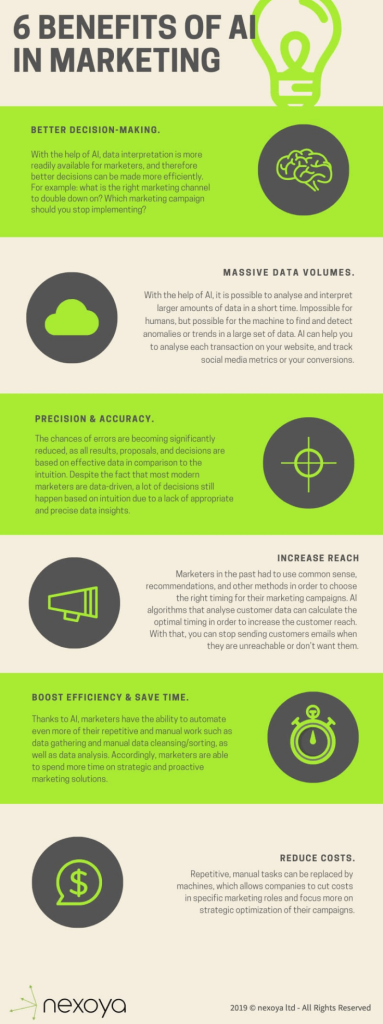So, you’ve heard about marketing AI but you’re not quite sure what it really means? Well, fear not, because in this article, we’ll be exploring the different types of marketing AI and shedding some light on this fascinating topic. From personalized content recommendations to predictive analytics, there are four distinct kinds of marketing AI that are revolutionizing the way businesses communicate with their target audience. So, grab a cup of coffee and get ready to dive into the world of marketing AI!
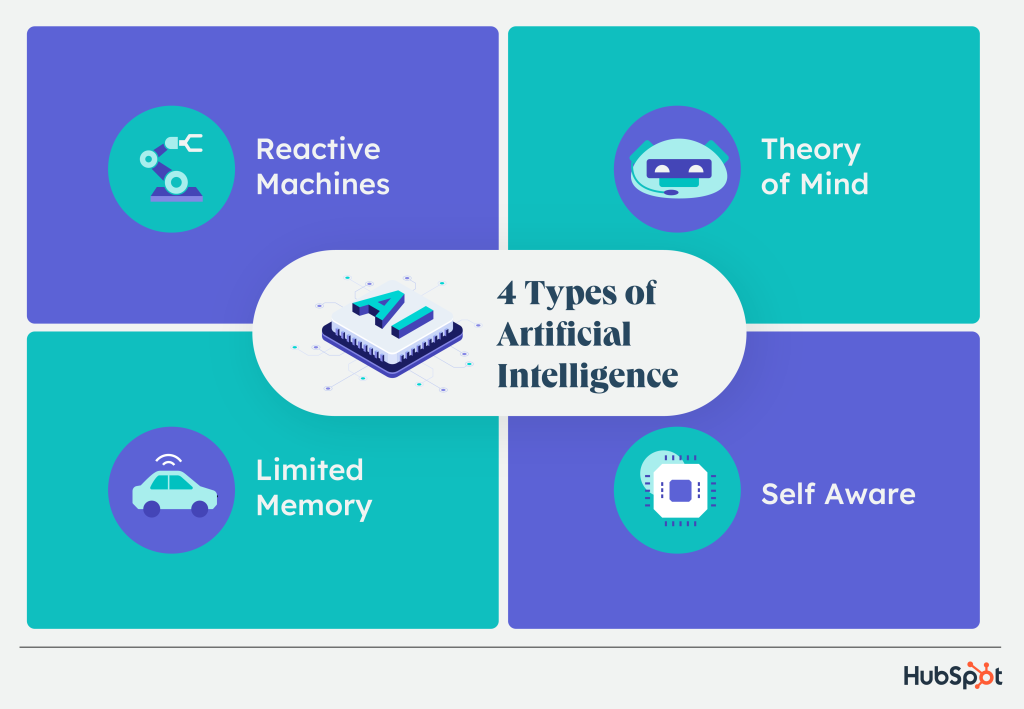
This image is property of blog.hubspot.com.
1. Chatbots
Chatbots have become increasingly popular in recent years as a way for businesses to improve their customer service and engagement. One of the key features of chatbots is their ability to understand and respond to natural language inputs – a concept known as natural language processing (NLP). By utilizing NLP, chatbots can understand and interpret customer queries in a way that feels more human-like, enhancing the overall customer experience.
In addition to their NLP capabilities, chatbots also offer personalized customer interactions. With the ability to store and retrieve customer data, chatbots can tailor their responses and recommendations based on an individual’s preferences, past purchases, and behavior. This level of personalization can help businesses build stronger relationships with their customers and increase customer satisfaction.
Perhaps one of the most significant advantages of chatbots is their availability for 24/7 customer support. Unlike human agents who can only work during specific hours, chatbots can be active round the clock, providing assistance and resolving customer issues at any time. This not only ensures that customers receive prompt responses but also reduces the workload on human customer support agents, allowing them to focus on more complex tasks.
2. Recommendation Systems
Recommendation systems have revolutionized the way businesses engage with their customers. Through the power of artificial intelligence, these systems can analyze vast amounts of customer data and generate personalized product recommendations. By leveraging data on past purchases, browsing history, and customer preferences, recommendation systems can suggest products that are highly relevant and tailored to individual customers’ needs and interests.
Apart from generating personalized recommendations, recommendation systems also contribute to improved customer engagement. By providing customers with options that align with their interests, businesses can increase the likelihood of customer conversions and repeat purchases. When customers feel that a brand understands their preferences and can offer tailored recommendations, it fosters a sense of loyalty and satisfaction, leading to stronger customer relationships.
Furthermore, recommendation systems enable businesses to implement cross-selling and upselling strategies effectively. By analyzing customers’ purchase history and behavior, these systems can identify related or complementary products and present them at the right moment during the customer journey. This not only increases the average order value but also enhances the overall shopping experience by offering relevant and valuable suggestions to customers.

This image is property of www.twinword.com.
3. Predictive Analytics
Predictive analytics has emerged as a game-changer for businesses looking to make data-driven decisions. By analyzing customer behavior patterns and historical data, predictive analytics algorithms can generate insights and predictions about future trends and outcomes. With this information, businesses can better understand their customers’ preferences, anticipate their needs, and align their strategies accordingly.
Customer behavior analysis is one of the key applications of predictive analytics. By analyzing data on customer interactions, past purchases, and browsing behavior, businesses can gain valuable insights into customer preferences, habits, and buying patterns. This information can then be used to create targeted marketing campaigns, optimize product offerings, and personalize customer experiences.
In addition to understanding customer behavior, predictive analytics can be used to forecast sales and trends. By analyzing historical sales data, market trends, and external factors such as seasonality or economic indicators, businesses can accurately predict future sales volumes, identify potential growth areas, and make informed decisions about inventory management, pricing strategies, and product development.
Furthermore, predictive analytics enables businesses to implement targeted marketing strategies. By leveraging customer data and predictive models, businesses can identify segments of customers with similar attributes and characteristics. This allows them to tailor marketing messages, offers, and promotions to specific customer segments, maximizing their impact and effectiveness.
4. Voice Assistants
Voice assistants, such as Amazon’s Alexa or Apple’s Siri, have become increasingly popular and are reshaping the way users search for information and interact with technology. For businesses, optimizing their online presence for voice search has become crucial to remain competitive in the digital landscape.
Voice search optimization involves tailoring a website’s content, structure, and keywords to match the conversational style of voice-based searches. Instead of typing short phrases into a search engine, users typically ask specific questions to voice assistants. Businesses need to ensure that their website provides relevant and concise answers to these questions, optimizing their chances of appearing in voice search results and attracting organic traffic.
Moreover, voice-activated marketing campaigns are gaining traction as businesses tap into the potential of voice assistants for advertising. Brands can create interactive and engaging experiences by integrating their advertising messages with voice assistants. This allows businesses to reach their target audience through audio ads or by offering helpful and branded responses to users’ queries, effectively leveraging the growing popularity of smart speakers and voice-controlled devices.
Additionally, voice assistants contribute to an enhanced user experience. By offering hands-free and intuitive interaction, voice assistants simplify and streamline tasks for users. Businesses that integrate voice assistants into their products or services can provide a more seamless and convenient experience to their customers, ultimately leading to higher customer satisfaction and loyalty.
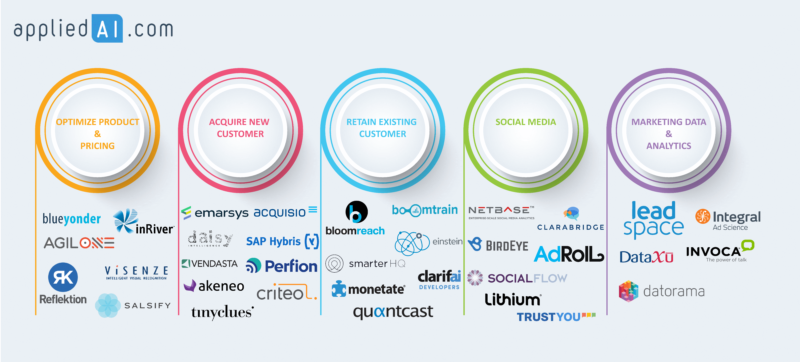
This image is property of research.aimultiple.com.
5. Social Media Monitoring
Social media monitoring has become an essential component of marketing strategies, enabling businesses to understand customer sentiment, track brand reputation, and identify influential individuals who can amplify their message. With the help of AI-powered sentiment analysis, businesses can analyze social media conversations and gain insights into how customers perceive their brand and products.
Sentiment analysis involves analyzing text data from social media posts, reviews, and comments to determine whether the sentiment expressed is positive, negative, or neutral. By monitoring sentiment trends, businesses can identify potential issues or areas of improvement, enabling them to respond proactively and address customer concerns. They can also identify brand advocates and engage with them, building stronger relationships and driving positive word-of-mouth.
Real-time brand monitoring is another valuable application of social media monitoring. By tracking mentions of their brand or relevant keywords on social media platforms, businesses can stay updated on customer conversations and respond promptly to customer inquiries or issues. This helps in maintaining a positive brand image and providing excellent customer service, ultimately leading to increased customer satisfaction and loyalty.
Influencer identification is yet another way that AI can assist businesses in leveraging social media to reach their target audience. By using AI algorithms, businesses can analyze social media data to identify individuals who have a significant impact on their target market. This allows businesses to connect with these influencers, collaborate on promotional campaigns, and tap into their network of followers to increase brand exposure and generate new leads.
6. Content Generation
The creation of high-quality content is crucial for businesses to engage their audience and drive traffic to their websites. With the help of AI-powered tools, businesses can automate the process of content generation, making it more efficient and scalable.
Automated copywriting is one of the key applications of AI in content generation. Using natural language processing and machine learning algorithms, AI systems can analyze large amounts of data and generate coherent and engaging written content. Businesses can leverage these tools to quickly generate blog posts, product descriptions, social media captions, and other types of textual content, saving time and resources.
Furthermore, AI-powered content generation enables businesses to personalize their content at scale. By analyzing customer data and behavior, AI algorithms can generate content that is tailored to specific customer segments or individuals. This level of personalization helps businesses deliver relevant and engaging content that resonates with their audience, enhancing the overall customer experience and increasing the likelihood of conversion.
Another aspect of content generation where AI can assist is content curation. With the abundance of information available on the internet, businesses can leverage AI algorithms to curate and filter relevant content for their audience. By analyzing user preferences, behavior, and social trends, AI-powered systems can recommend articles, videos, or other types of content that are likely to be of interest to individual users, providing them with valuable and curated content.
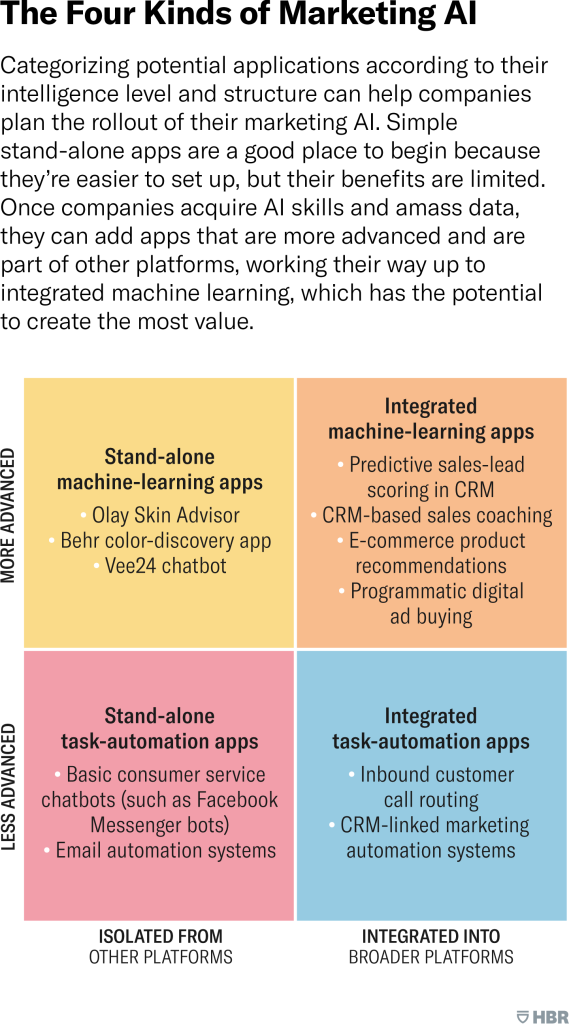
This image is property of hbr.org.
7. Programmatic Advertising
Programmatic advertising, powered by AI, has transformed how businesses approach digital advertising. By leveraging AI algorithms, businesses can automate and optimize their ad placement strategies, reaching their target audience more effectively and efficiently.
Targeted ad placement is one of the key benefits of programmatic advertising. AI algorithms can analyze vast amounts of data, including browsing history, demographics, and user behavior, to identify the most relevant audience for a particular ad campaign. By ensuring that ads are displayed to the right people at the right time, businesses can increase their chances of conversion and maximize their return on investment.
Furthermore, programmatic advertising enables the creation of dynamic ad campaigns. AI algorithms can generate personalized ad content on the fly, tailoring the messaging and visuals to individual users based on their preferences, behavior, or location. This level of personalization helps businesses deliver more relevant and compelling ads, capturing users’ attention and increasing the likelihood of engagement.
Real-time bidding is another key aspect of programmatic advertising powered by AI. By analyzing available ad inventory and user data in real-time, AI algorithms can determine the optimal bid for a specific ad placement, maximizing the chances of winning the auction. This automated and data-driven approach to ad buying allows businesses to optimize their advertising budget and reach their target audience more effectively.
8. Customer Segmentation
Customer segmentation is a fundamental marketing strategy that involves dividing a customer base into distinct groups based on specific criteria. With the help of AI, businesses can implement more advanced and accurate methods of customer segmentation, allowing for more effective targeting and personalized marketing campaigns.
Behavioral segmentation is a valuable application of AI in customer segmentation. By analyzing customer behavior data, such as website interactions, purchase history, or engagement metrics, AI algorithms can identify patterns and segment customers based on their buying habits, preferences, or engagement levels. This allows businesses to tailor their marketing initiatives to specific customer segments, improving the relevance and effectiveness of their campaigns.
Demographic segmentation is another common method of customer segmentation that AI can enhance. By analyzing demographic data such as age, gender, location, or income level, AI algorithms can identify distinct customer groups with similar characteristics or needs. This enables businesses to create targeted marketing messages and offers that resonate with specific demographic segments, increasing the chances of conversion.
Psychographic segmentation is a more nuanced approach to customer segmentation that takes into account customers’ attitudes, interests, and lifestyle choices. AI algorithms can analyze social media posts, online interactions, or survey data to uncover hidden patterns and preferences, allowing businesses to create highly targeted marketing campaigns that align with customers’ psychographic profiles.
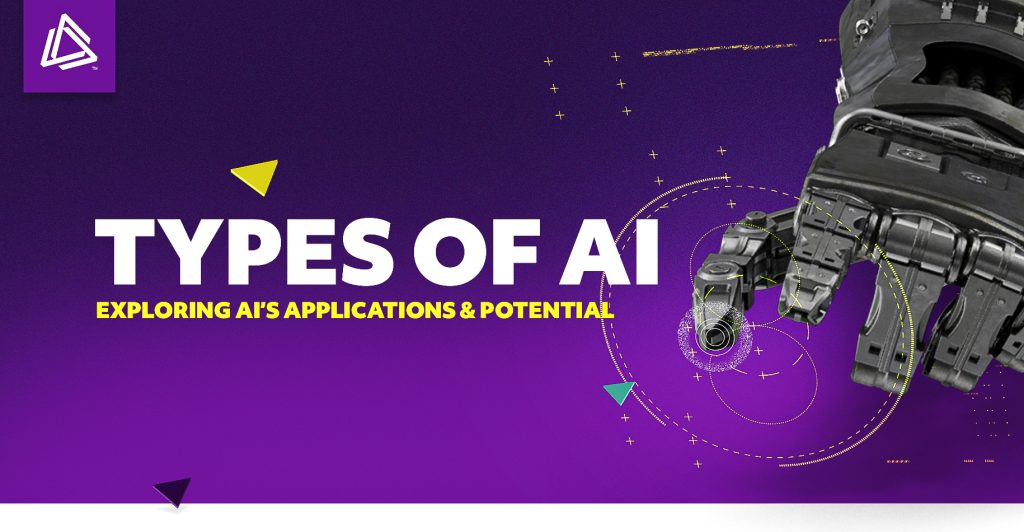
This image is property of marketingformanufacturers.com.
9. Email Marketing Automation
Email marketing continues to be a powerful tool for businesses to connect with their audience and drive conversions. With the help of AI-powered automation tools, businesses can streamline their email marketing efforts, delivering personalized and timely messages to their subscribers.
Personalized email campaigns are a key application of AI in email marketing automation. By leveraging customer data, AI algorithms can create personalized email content that resonates with individual subscribers. Whether it’s dynamic content based on past purchases, behavioral triggers, or personalized recommendations, businesses can utilize AI automation to deliver highly relevant emails that drive engagement and conversions.
Email segmentation is another valuable aspect of email marketing automation. By analyzing customer data and behavior, AI algorithms can segment email subscribers based on specific criteria such as demographics, interests, or purchasing history. This allows businesses to send targeted emails to different segments, tailored to their preferences and needs. By ensuring that subscribers receive content that is relevant and valuable to them, businesses can increase open rates, click-through rates, and overall engagement.
Autoresponders are a time-saving feature of email marketing automation. By setting up predefined sequences of emails triggered by specific actions or events, businesses can automate their follow-up process and nurture leads or customers. Whether it’s a welcome series for new subscribers or a series of abandoned cart reminders, AI-powered autoresponders can deliver timely and personalized messages, improving the customer journey and driving conversions.
10. Data Analysis and Insights
Data analysis is a critical component of any marketing strategy, enabling businesses to gain insights into customer behavior, campaign performance, and overall marketing effectiveness. With the help of AI-powered data analysis tools, businesses can process and visualize data more efficiently, uncovering actionable insights.
Data visualization is an essential aspect of data analysis and AI plays a significant role in simplifying and enhancing this process. AI algorithms can transform complex data sets into visual representations such as charts, graphs, or infographics, making it easier for marketers to understand and interpret the data. Data visualization enables businesses to identify trends, patterns, or anomalies, and make more informed decisions about their marketing strategies.
Cross-channel analytics is another valuable application of AI in data analysis. In today’s digital landscape, businesses interact with customers across multiple channels, such as websites, social media, email, or offline touchpoints. AI algorithms can aggregate and analyze data from these different channels, providing a holistic view of customer behavior and engagement. This allows businesses to identify cross-channel trends, assess the impact of marketing initiatives, and optimize their overall marketing mix.
Campaign performance tracking is a crucial aspect of data analysis, and AI can automate and augment this process. By leveraging AI-powered analytics tools, businesses can track the performance of their marketing campaigns in real-time, monitor key metrics, and identify areas for improvement. With AI-generated insights and recommendations, businesses can refine their strategies, optimize their marketing spend, and achieve better campaign results.
